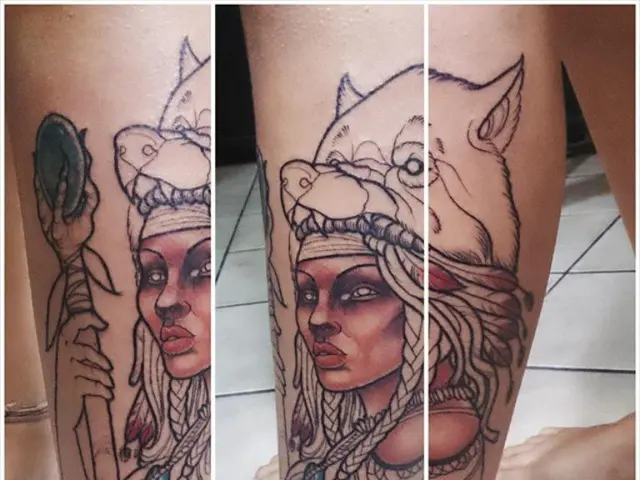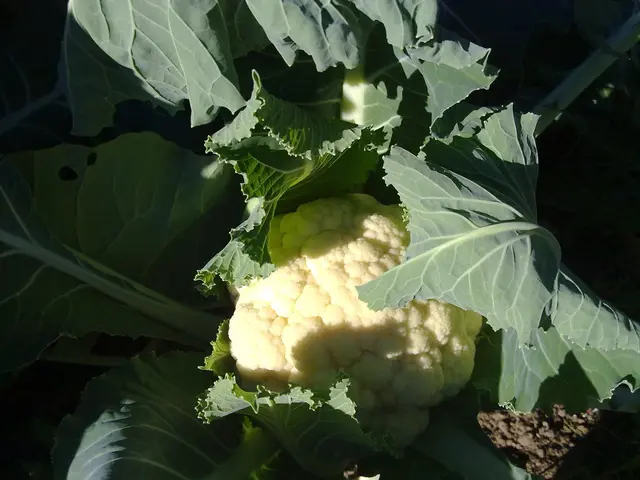Rapid and severe rosacea flare-up: Understanding causes, manifestations, and treatment options
Rosacea fulminans is a fiery, sudden-onset skin disorder that primarily strikes the central facial area – chin, cheeks, and nose. Unlike average rosacea or acne, its symptoms are far more aggressive and swift in their appearance.
Known as pyoderma faciale, rosacea fulminans presents as inflamed, painful red bumps and nodules that may fuse together. The symptoms share a resemblance with those of rosacea and acne, but they're markedly more severe [1].
Rosacea fulminans most frequently affects women of child-bearing age, yet the exact cause of its fury remains a mystery.
Successful treatment might call for corticosteroids and Accutane (isotretinoin), with stress management and dietary adjustments as helpful supplements.
Triggers Unveiled
Exploring the origins of rosacea fulminans, a 2020 review hints at potential connections with conditions like inflammatory bowel disease and pregnancy [2].
It's also more likely to rear its head in individuals who've had rosacea before. Various factors that may propel this condition include emotional stress, hormonal fluctuations, and some medications [2].
The 2021 literature review suggests that specific dietary elements could trigger or intensify rosacea symptoms. However, it's noteworthy that these findings do not pertain exclusively to rosacea fulminans [3].
Potential dietary triggers are listed below, but keep in mind that there's a lot of variation from person to person:
- Spicy foods: Known for their ability to trigger flushing and inflammation, they can potentially escalate rosacea fulminans symptoms.
- Alcohol: Triggers or aggravates symptoms for many rosacea sufferers.
- Cinnamaldehyde-rich foods: These include chocolate, tomatoes, and citrus fruits, which could contribute to flare-ups due to their cinnamaldehyde content.
- Histamine-rich foods and beverages: Examples include wine, aged cheese, processed meats, any of which could increase histamine levels in the body, presumably setting the stage for a flare-up.
- Hot drinks: They might up the ante on the flushing and discomfort associated with rosacea fulminans [3].
Picture This: Symptoms of Rosacea Fulminans
Rosacea fulminans primarily strikes the forehead, nose, cheeks, and chin. Its symptoms include:
- Rapid onset of severe, localized skin tone changes, like redness
- Painful pustules, papules, and nodules that may merge
- Swelling and inflammation
- Flushing and blushing
- Stinging and burning
In some cases, ocular symptoms may arise as well, including dry, burning, or itchy eyes and light sensitivity [1]. Systemic symptoms like fever and fatigue are very rare.
Treatment and Relief
The fight against rosacea fulminans might demand oral isotretinoin, a prescription-only acne medication, and corticosteroids, available both in oral and topical forms.
In a 2016 case study, the combination of antibiotics, corticosteroids, and lifestyle changes cured a patient's symptoms [1].
By addressing potential triggers, a healthcare professional may suggest:
- Reducing stress: Strategies might include mindfulness meditation, deep breathing exercises, regular exercise, and journaling.
- Making certain dietary changes: This could involve cutting down on alcohol.
- Using gentle skin care products on the face.
Pairing these lifestyle adjustments with medication could help alleviate symptoms and improve the quality of life for those suffering from rosacea fulminans.
Get the Help You Need
Jumpstart treatment if you experience:
- Symptoms that transcend typical rosacea or acne – large, tender nodules, abscesses, or significant facial discomfort
- A sudden onset of symptoms
- Symptoms that persist or worsen despite using over-the-counter medications or rosacea therapies
- Eye irritation or inflammation
- Systemic symptoms like fever
Prompt medical attention is crucial for accurate diagnosis, prompt treatment, and preventing complications, such as scarring and infections. On-time intervention may help minimize emotional distress, improving overall quality of life [1].
Connecting with a dermatologist or healthcare professional offers personalized care tailored to your specific needs and circumstances.
Rosacea fulminans presents as inflamed, painful red bumps and nodules that may fuse together, often affecting women of child-bearing age. The 2021 literature review suggests potential dietary triggers like spicy foods, alcohol, cinnamaldehyde-rich foods such as chocolate, tomatoes, and citrus fruits, histamine-rich foods and beverages, and hot drinks could contribute to flare-ups. Treatment might involve oral isotretinoin and corticosteroids, along with reducing stress, making dietary changes, and using gentle skin care products to help alleviate symptoms. Seeking prompt medical attention is crucial, especially in cases of sudden onset or when over-the-counter treatments or rosacea therapies prove ineffective. Engaging with a dermatologist or healthcare professional provides personalized care based on individual needs.








